Paintinglike a master takes decades of patient practice.
Developing a high level of artistic skill takes much experience and self confidence.
To improve artwork and make an original painting look like it has a master’s touch, there are some essential areas artists must focus upon.
Michelangelo was indeed a master artist.
His original painting below titled ‘The Creation of Adam’ was placed onto the ceiling of a church.
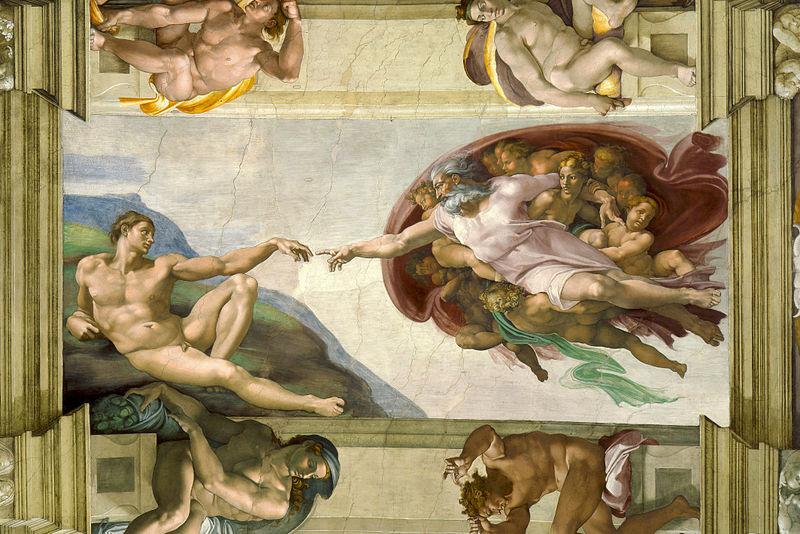
‘Creation of Adam’ by Michelangelo – ceiling of the Sistine Chapel in the Vatican, Rome, 1508-1512, fresco
It’s one of the most famous original paintings in the world, located in Vatican City, Italy.
God reaches from heaven to touch the finger of man. To animate Adam’s listless body, through his holy spirit in the Garden of Eden.
This article outlines six important creative approaches used by master artists like Michelangelo, Rembrandt, Picasso, Turner, and DaVinci that modern artists can use today to improve their original paintings.
Firstly, all five artists had one very important common trait.
They cared deeply about their craft.
Point 1. A master artist is passionate about art and works constantly to refine their creative skill.
Michelangelo achieved technical mastery in 3 different creative disciplines, original painting, sculpture and architecture.
Due to his love for sculpture, Michelangelo established a new style for his time, which produced a 3 dimensional sculptural feel in his paintings.
From the time Michelangelo signed the contract in 1508, it took him 4 years to complete painting theSistine Chapel’s ceilings and walls.
He endured many hardships and completed the massive task alone. Spending extremely long hours standing upright, upon dangerously high fragile scaffolding, awkwardly reaching above his head to paint the ceiling.
Point 2. A master artist understands it takes great patience, determination and persistence to finish difficult creative projects.
Rembrandt was also a renowned artist. He lived in Amsterdam, the commercial epicenter of Europe during the 1600’s.
He was a master at capturing unique lighting effects upon his subjects in original paintings.
Rembrandt used strong contrasts of light upon dark, focusing viewer’s attention towards areas of the canvas that created dramatic interest and mood.
Rembrandt used the visual tool of contrast to maximum effect in his original art.
His masterful skill of gentle warm light meant that Rembrandt was able to powerfully depict emotions on his subject’s faces. Even portraying inanimate objects with subtle emotion.
Point 3. Rembrandt had an innate ability to express compassion for people in his original paintings.
Completed in 1969, the self-portrait original painting below is Rembrandt during old age. Visually, he expresses an acceptance of what life had dealt him.
Without defeat or bitterness, but with compassion for fellow man, he accepts the reality of his tumultuous creative life.
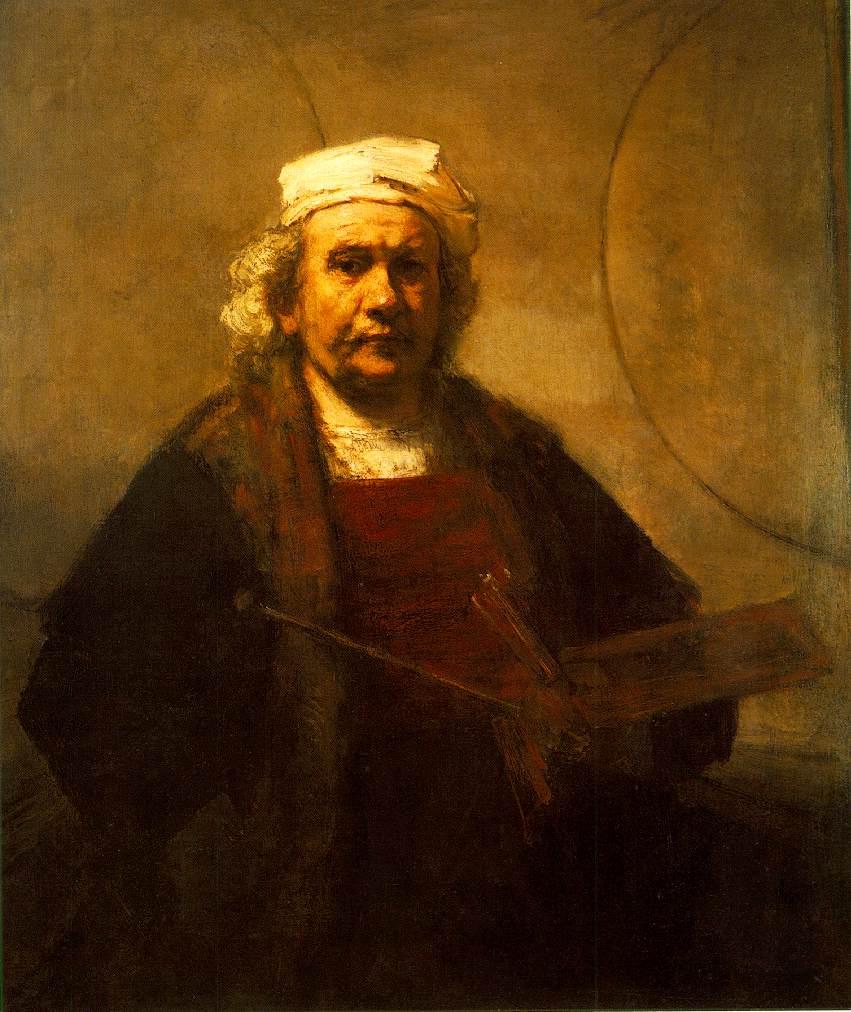
‘Self-portrait’ painted by Rembrandt around 1665 – 1669 (last years of his life). In Kenwood House, Hampstead, London. ©Wikimedia Commons image
Point 4. A master artist uses contrasts in paintings for dramatic impact and visual effect.
William Turner (1775 –1851) was a master at capturing atmospheric feeling in his original paintings.
He was an English romantic landscape painter whose original paintings contain a spirit of freedom and intangible beauty.
Turner helped set the foundations of abstract art.
Producing fascinating cloud formations that created their own textural vitality and esoteric meaning.
He painted everyday landscapes but achieved an extraordinary mysterious quality in original paintings, capturing the ocean, land and sky in unique ways.
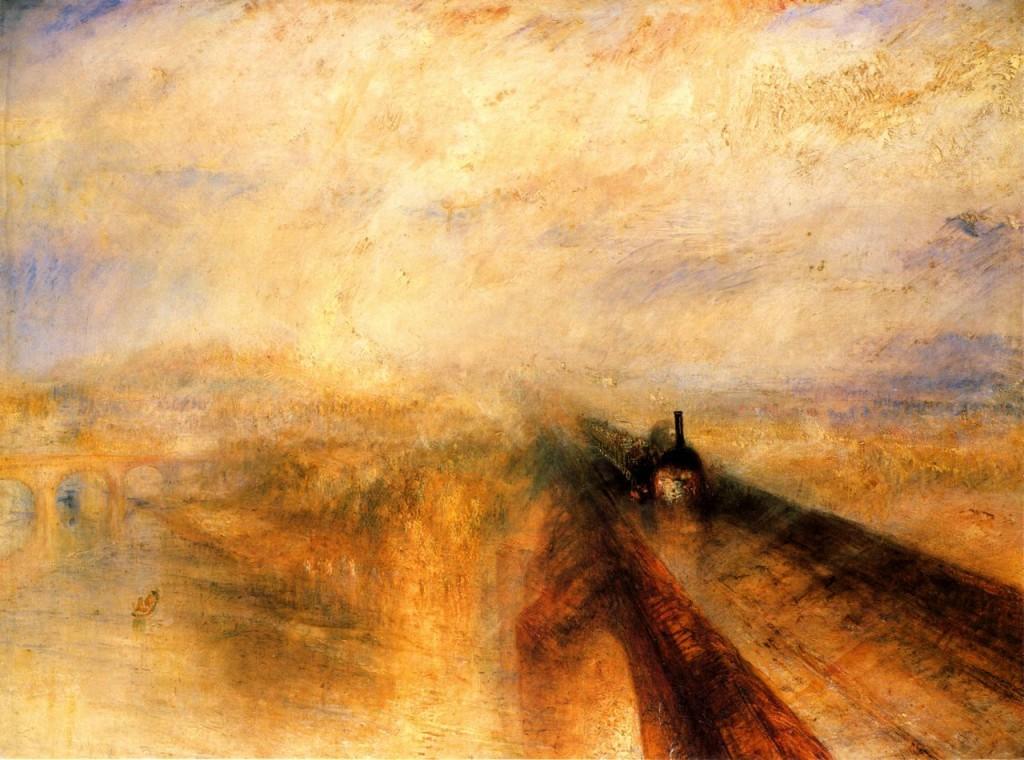
“Rain, Steam and Speed – The Great Western Railway” (1844) by William Turner Oil on canvas 91 × 121.8 cm, Turner Bequest, 1856, ©Creative Commons image
Turner experienced his own personal feelings through the moods of nature.
He had a deep appreciation of nature and was early to foresee the destructive dangers of the industrial revolution upon our natural environment.
His romantic art was achieved by adding many layers of colour and texture. Producing a translucent multi dimensional character to his original paintings.
Point 5. A master artist depicts an atmosphere in a painting. Adding romance and a unique untouchable mystery to a piece of art.
Picasso was a master artist who helped form western civilisations understanding of modern art. He wasn’t afraid to leap into the unknown and achieve astounding creative results in his original paintings.
Picasso had great imagination and possessed the courage to follow his heart and establish innovative art movements. Cubism signalled an important breakthrough in the history of modern art.
In visual terms, cubism expressed a machine like character, synonymous with the industrial revolution.
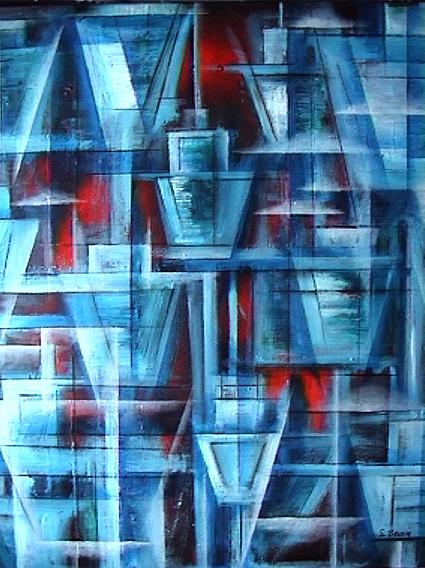
‘Cubist Sydney Tower’ by Simon Brushfield (2005) Oil, Acrylic and Charcoal on board 80cm x 60cm (Sold: Private European Acquisition)
Picasso’s strength of imagination was unlimited and sometimes used his art as an anti-war statement.
He allowed the subject matter to take it’s own creative emotional direction and flow with the historical progress happening at the time.
He was a passionate man who constantly pushed the boundaries of modern art. Which led Picasso into an extraordinarily prolific career producing original art.
Point 6. A master artist allows human emotion and imagination to take flight without imposing rational constraints upon the creative process.
Leonardo Da Vinci’s creative life was incredibly diverse.
Avoiding boredom, he sought different projects to keep his creative mind stimulated. Da Vinci was interested in absolutely everything.
Leonardo not only mastered the fine art of painting, but also reinvented himself with a large variety of fascinating engineering and scientific projects, whereby he employed his skill of drawing.
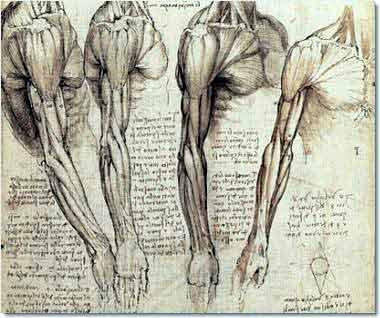
Leonardo’s scientific study of the human arm muscles from his sketchbook
He claimed to have dissected over 30 human bodies and recorded his findings with minute scientific accuracy. He also analysed the human nervous system and foetus in the womb with intricate detail.
Leonardo’s curiosity led him to incredible discoveries ranging from engineering, philosophy, manpowered flight, weapons of war, human anatomy even town planning.
